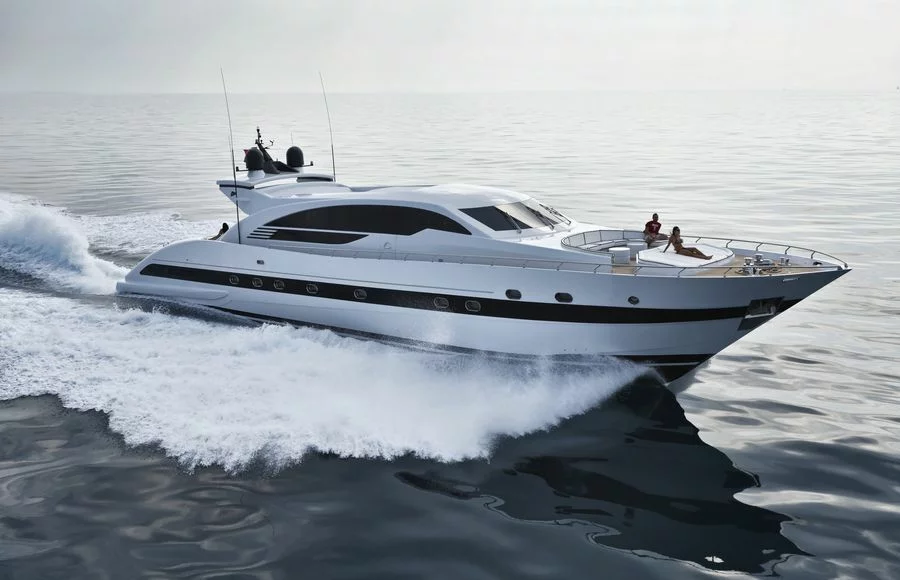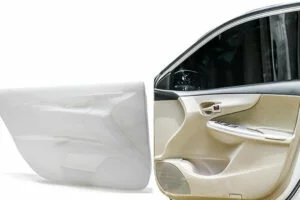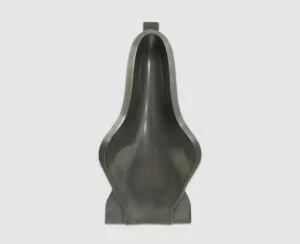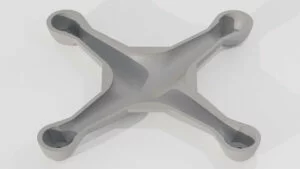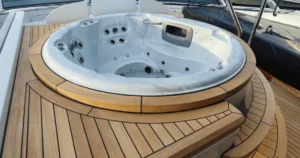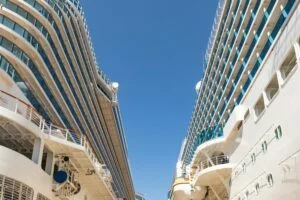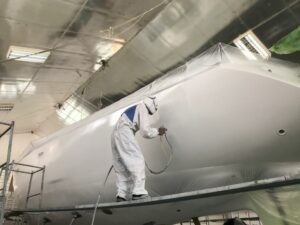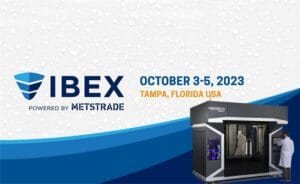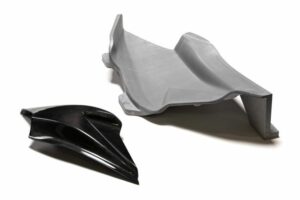The world of boat building is constantly evolving, driven by the relentless pursuit of lighter, stronger, and more durable vessels. At the forefront of this innovation are state-of-the-art materials that push the boundaries of performance and design. In our previous blog, we explored some commonly used boat building materials and in this blog, we’ll delve into more advanced materials, exploring their unique properties and their transformative impact on boat construction.
Carbon Fiber
Graphite fibers offer excellent stiffness and high tensile and compression strengths but typically have low impact resistance and are therefore often combined with S-glass or other exotic materials. Carbon fiber can outperform metal in many situations but is the most expensive type of fiber reinforcement, costing as much per pound as 100 times that of common E-glass. Despite the cost, its robustness and high fiber stiffness impress boat manufacturers and it is second only to Kevlar in specific strength.
Carbon fiber’s remarkable strength and lightweight properties make it a game-changer in modern boat construction. Carbon fiber boats use honeycomb structures inserted into flat strips and woven into cloth with vinyl ester resin for an incredibly robust and lightweight material. These boats are stronger, stiffer, and lighter than their traditional fiberglass counterparts but are significantly more expensive.
Kevlar
Kevlar is a trademarked name for a type of nylon known as an aromatic polyamide (or aramid) produced globally by DuPont. Initially used to reinforce tire belting, its unique properties led to its use in other applications, with the most common being bulletproof jackets. Kevlar 29 is used in lines, cables, and flak jackets, while Kevlar 49 is used as a reinforcing fiber in plastic composites. Kevlar has the highest specific tensile strength of any commercial fiber when compared to its weight, making a Kevlar hull much lighter than an E-glass hull with the same stability. Kevlar is highly resistant to impact and can prevent cracks from spreading, but it has relatively weak compression strength and is often combined with other fibers to balance this trait.
Nomex
Nomex is a chemical produced by DuPont and is renowned for its fireproof properties, making it ideal for fire-resistant suits for firefighters and race car drivers. It is an aramid that is transformed into a paper-like material and utilized in honeycomb structures.
Hybrids
Hybrid fabrics are composed of two or more types of fibers. A popular mixed blend combines Kevlar and carbon fiber, where Kevlar provides excellent impact resistance and carbon fiber delivers stiffness. Other hybrid combinations such as S-glass, Kevlar, and carbon fiber are available to optimize specific properties while keeping costs low.
Materials For Boat Cores
Core materials are frequently utilized to enhance stiffness and reduce weight in boat building. Boat manufacturers have the option to core the entire boat, use solid fiberglass from the waterline down and coring above. Alternatively, they can use a combination of coring and solid fiberglass throughout the vessel.
Balsa Core
Initially, boat builders used long balsa planks to reinforce hulls, but this approach led to rot and structural problems when water seeped through the entire plank. However, cutting through the grain of balsa and creating a checkered pattern of end-grain pieces has made it a popular and affordable core material for modern boats. Balsa provides excellent impact resistance, high compressive strength, sound, and thermal insulation and can dampen vibrations. However, it tends to absorb resin, which can increase the hull’s weight, but this can be prevented through best practices during construction.
PVC Foams
Airex and Klegecell are the most widely used commercially produced foam cores in boat construction. Both are closed-cell foams made from polyvinyl chloride but with unique characteristics. Airex is a non-cross-linked PVC, giving it greater flexibility and damage resistance. Klegecell is a rigid, cross-linked foam. Divinycell, a Scandinavian variant of Klegecell, is often used in boats built outside the United States.
Honeycomb
A material with a unique waffle-like pattern, Honeycomb is the stiffest core material for its weight, initially designed for aircraft flooring and bulkheads, explaining its exceptional compression and shear strengths. Nomex honeycomb is preferred for yachts but comes at a high cost. Paper honeycomb is available, made by infusing resins into Kraft paper to shape a honeycomb that is durable and water-resistant but heavier than Nomex. Pre-made “skinned panels” resembling plywood are also available, cut into honeycomb bulkheads with overlays such as teak veneer.
Conclusion: A Material Renaissance
The introduction of state-of-the-art materials has ushered in a new era of boat building, enabling the creation of vessels that were once unimaginable. From the lightweight prowess of carbon fiber to the impact-absorbing brilliance of Kevlar, these advanced materials are shaping the future of marine engineering. As we continue to explore the potential of these materials and push the boundaries of innovation, we can envision a future where boats are not only stronger, lighter, and more durable but also more sustainable and environmentally conscious. The material advancements in boat building is a testament to human ingenuity and our unwavering pursuit of excellence in marine design and construction.


